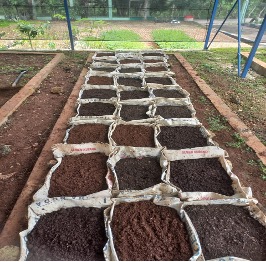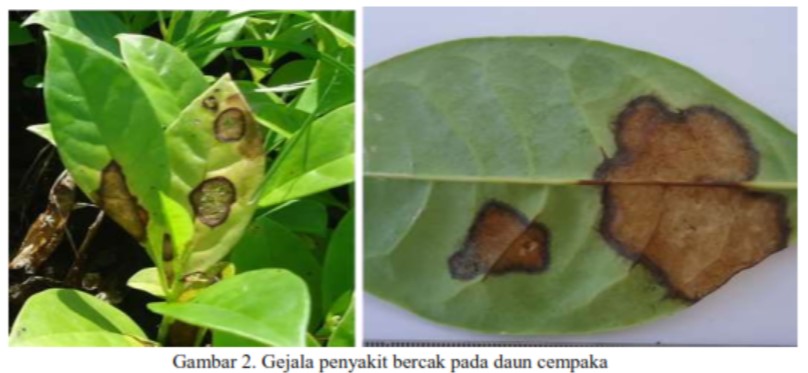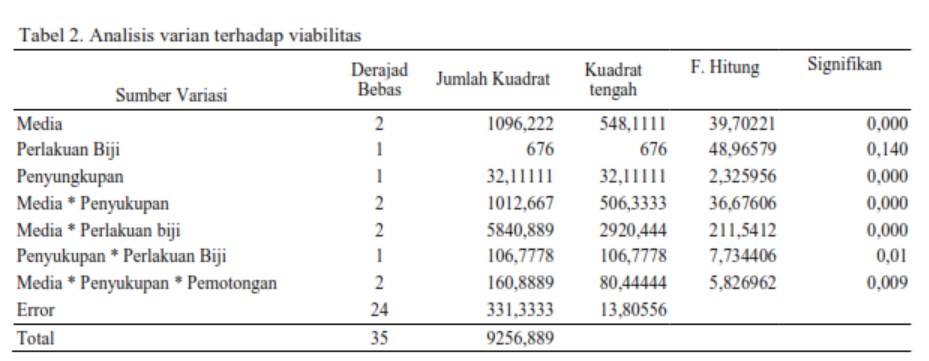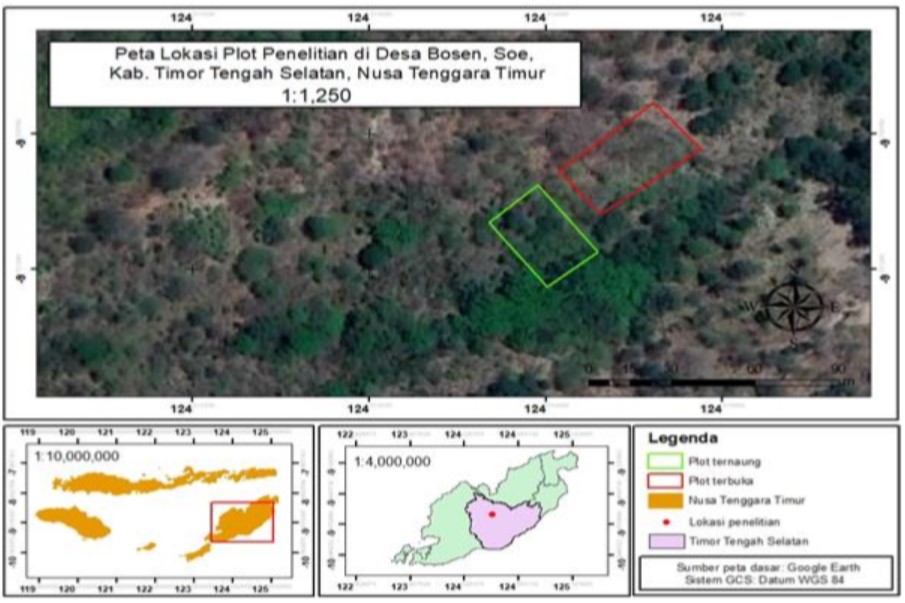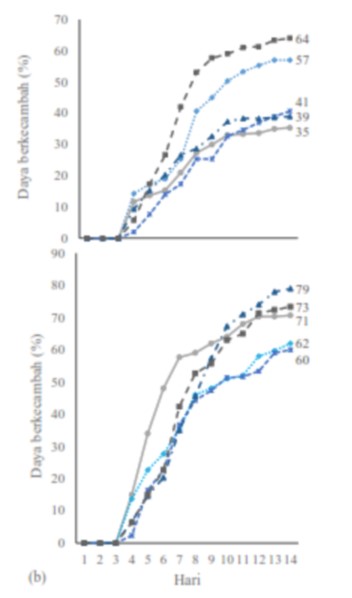Shade Effect on Growth and Quality of Cempaka Wasian Seedling (Magnolia tsiampaca (Miq.) Dandy) in Nursery
Abstract
Cempaka wasian (Magnolia tsiampaca (Miq) Dandy )) is one tree species with high economic value. Cempaka wasian development in the form of community forests in the province of North Sulawesi needs to be supported by the availability of quality seeds. Generally, plant has different effect towards light it received. This study aimed to determine the effect of shade intensity on the growth of seedlings in the nursery. The experimental design used in this research is completely randomized design. The treatments were tested among other shade with a density of 25 % (± 37,350 lux light intensity), the shade with a density of 50 % (± 19,100 lux light intensity) and shade with a density of 75 % (± 8,018 lux light intensity). The results showed that treatment with 50% shade density (± 19,100 lux light intensity) gives the best effect on the growth and quality of seedlings in the nursery.
الحقوق الفكرية (c) 2017 Jurnal Wasian

هذا العمل مرخص بموجب Creative Commons Attribution-NonCommercial 4.0 International License.
Copyright and License
All articles published in Wasian Journal are the property of the authors. By submitting an article to Wasian Journal, authors agree to the following terms:
-
Copyright Ownership: The author(s) retain copyright and full publishing rights without restrictions. Authors grant the journal the right to publish the work first and to distribute it as open access under a Creative Commons Attribution 4.0 International License (CC BY 4.0).
-
Licensing: Articles published in Wasian Journal are licensed under a Creative Commons Attribution 4.0 International License (CC BY 4.0). This license allows others to share, copy, and redistribute the material in any medium or format, and adapt, remix, transform, and build upon the material for any purpose, even commercially, provided that proper credit is given to the original author(s) and the source of the material

This work is licensed under a Creative Commons Attribution 4.0 International License. -
Author's Rights: Authors are permitted and encouraged to post their work online (e.g., in institutional repositories or on their website) prior to and during the submission process, as it can lead to productive exchanges and greater citation of published work.
-
Third-Party Content: If your article contains material (e.g., images, tables, or figures) for which you do not hold copyright, you must obtain permission from the copyright holder to use the material in your article. This permission must include the right for you to grant the journal the rights described above.
-
Reprints and Distribution: Authors have the right to distribute the final published version of their work (e.g., post it to an institutional repository or publish it in a book), provided that the original publication in Wasian Journal is acknowledged.
For the reader you are free to:
- Share — copy and redistribute the material in any medium or format for any purpose, even commercially.
- Adapt — remix, transform, and build upon the material for any purpose, even commercially.
- The licensor cannot revoke these freedoms as long as you follow the license terms.
Under the following terms:
- Attribution — You must give appropriate credit , provide a link to the license, and indicate if changes were made . You may do so in any reasonable manner, but not in any way that suggests the licensor endorses you or your use.
- No additional restrictions — You may not apply legal terms or technological measures that legally restrict others from doing anything the license permits.
Notices:
You do not have to comply with the license for elements of the material in the public domain or where your use is permitted by an applicable exception or limitation .
No warranties are given. The license may not give you all of the permissions necessary for your intended use. For example, other rights such as publicity, privacy, or moral rightsmay limit how you use the material.
الأعمال الأكثر قراءة لنفس المؤلف/المؤلفين
- Arif Irawan Arif , Kristian Mairi Kristian, Sulistya Ekawati Sulistya, Analysis Of Tenurial Conflict In Production Forest Management Unit (Pfmu) Model Poiga , Jurnal Wasian: مجلد 3 عدد 2 (2016): December
- Ady Suryawan Ady , Arif Irawan Arif , The Effect of Weaning Tecnique to Survival Rate and Height Growth of Nyamplung (Calophyllum inophyllum) Plant , Jurnal Wasian: مجلد 4 عدد 1 (2017): June




